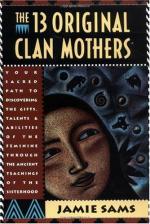|
This section contains 792 words (approx. 3 pages at 300 words per page) |

|
Guidebooks.
Before 1700 early Americans got their news about the world from random and inconstant sources: the neighbor next door, the clergyman on Sunday mornings, the stranger on the road. But one consistent source of information was the annual almanac. It was a potpourri of news and information. Aside from predicting the weather and the date of the harvest moon, almanacs listed recipes, court dates and locations, and the routes and mileages of local roads. They provided chronologies of events and became the most important vehicle for spreading scientific knowledge in early America.
Astrology and Astronomy.
Alongside the most recent European discoveries, the reader of an almanac found astrological tables and diagrams. Benjamin Franklin, more out of playfulness than seriousness, included astrology and prophecies in his first edition of Poor Richard's Almanack (1732). But clearly early Americans expected astrological tables and symbols in their almanacs. There was...
|
This section contains 792 words (approx. 3 pages at 300 words per page) |

|




